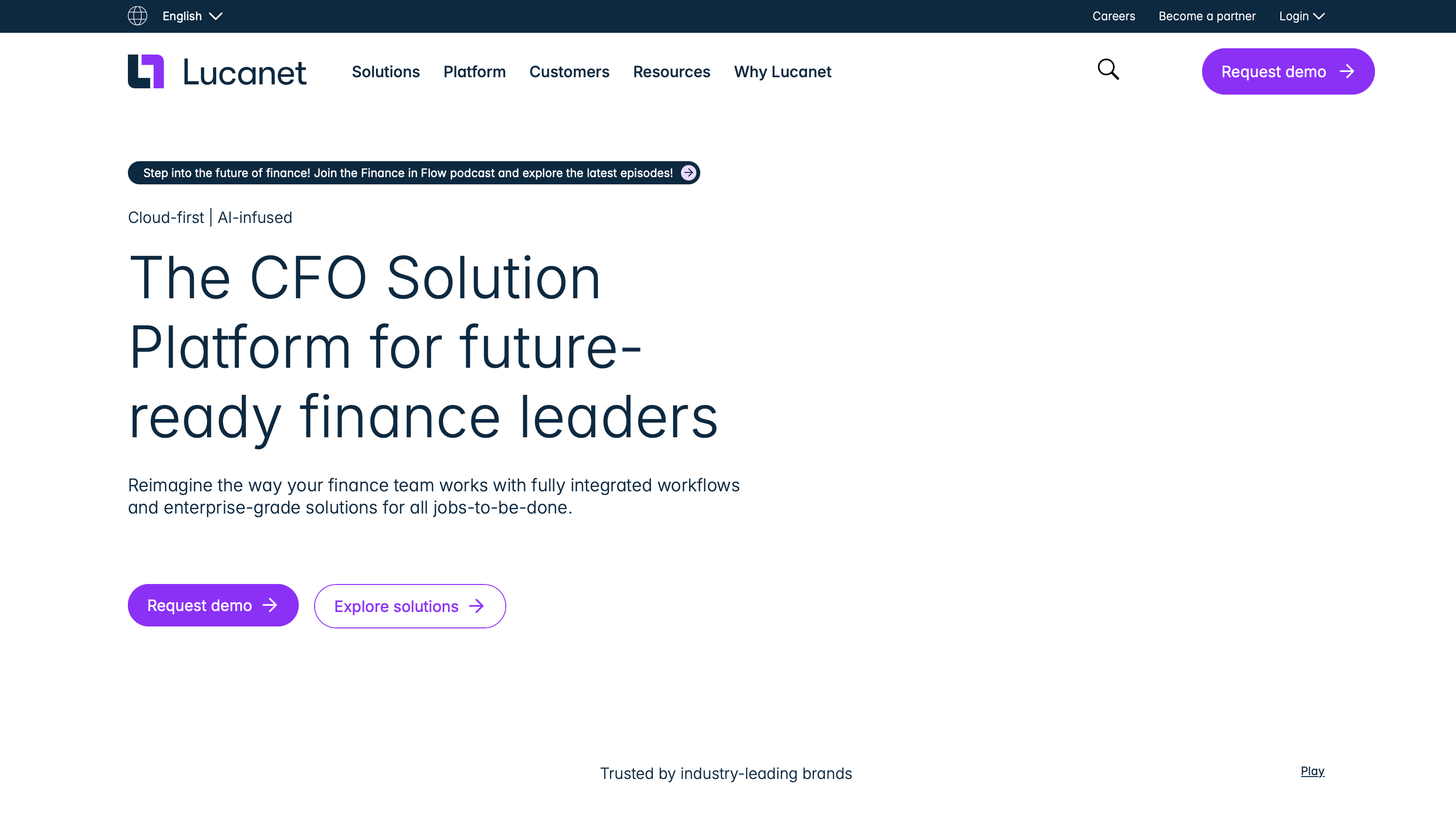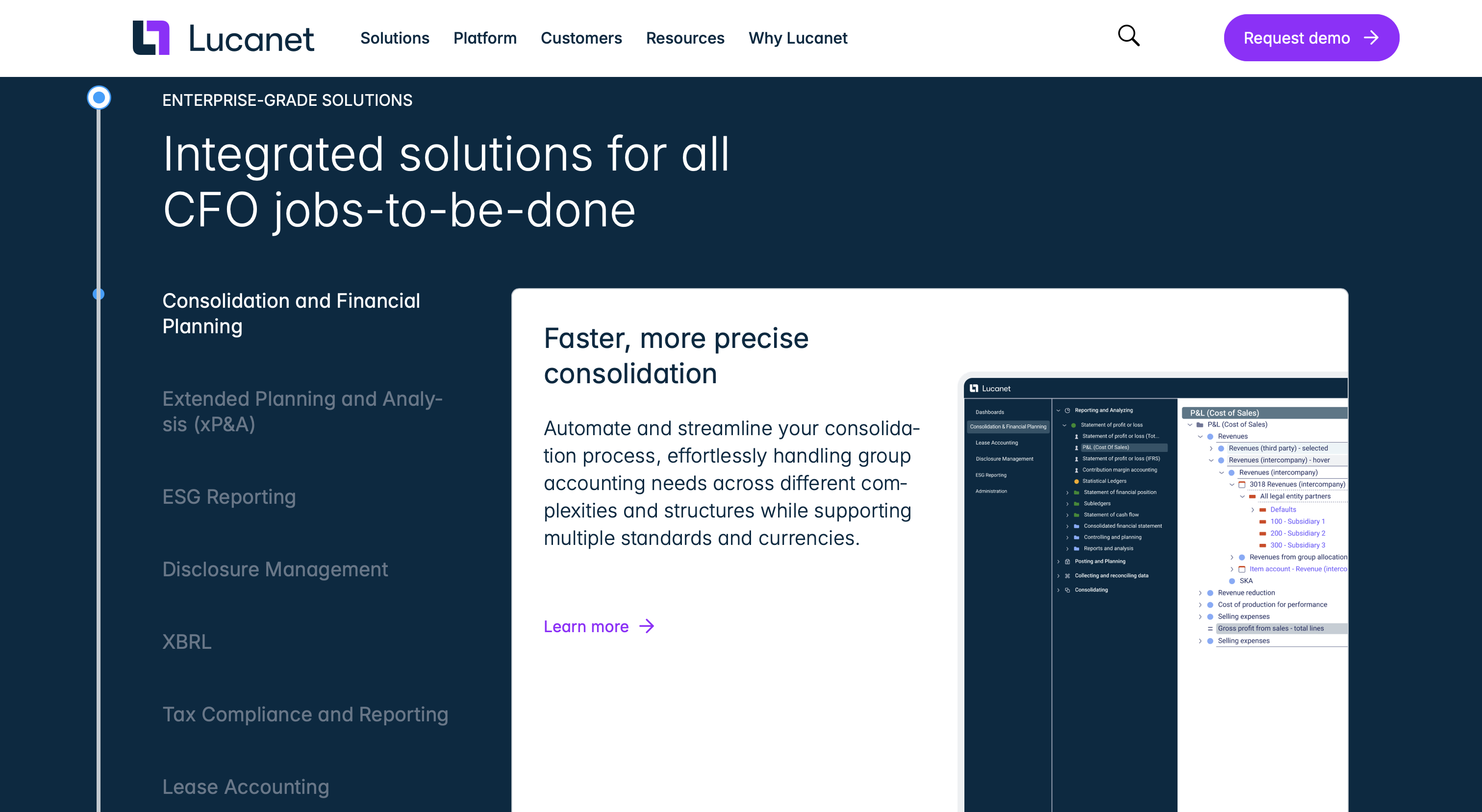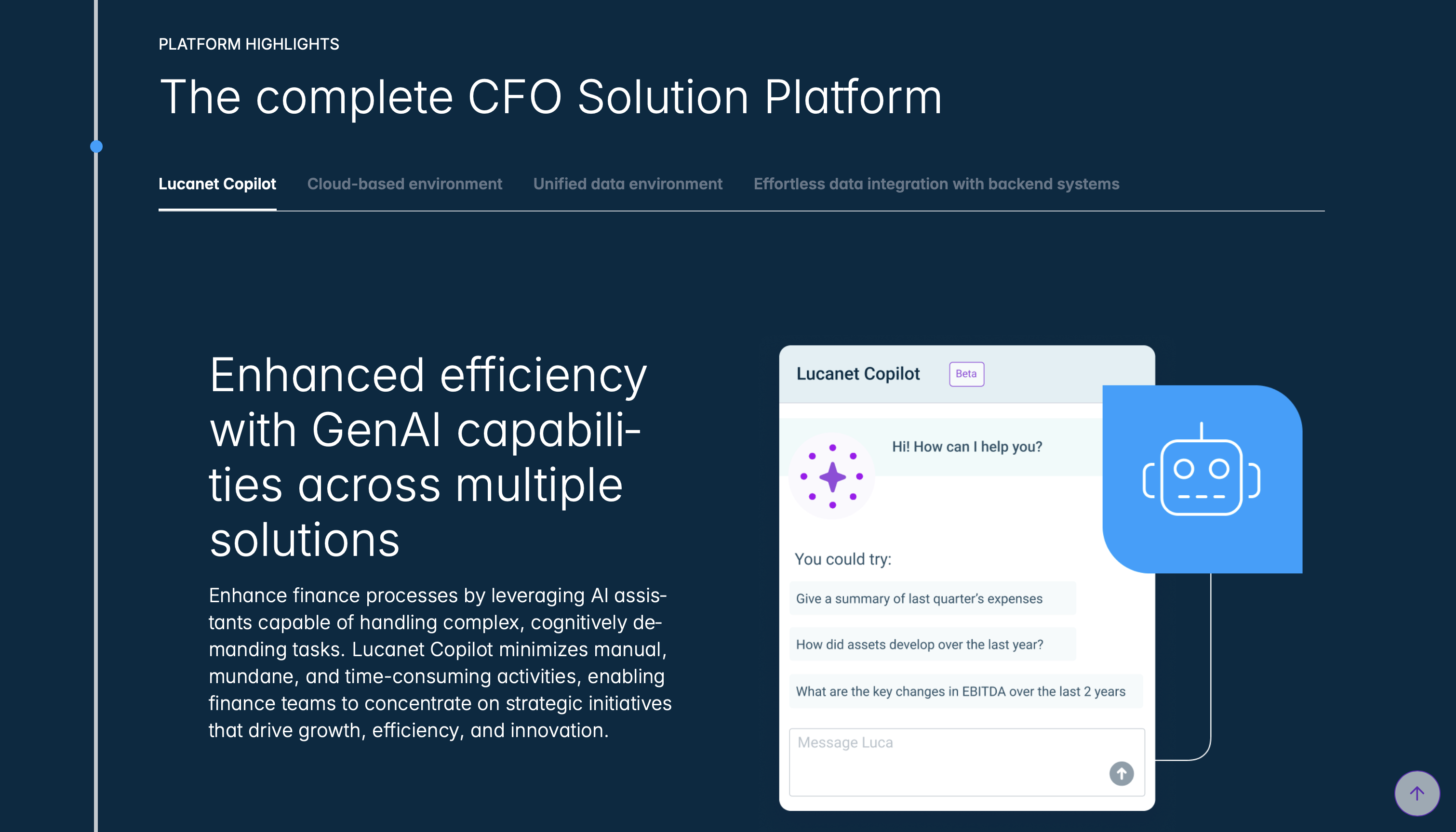
Lucanet organizes its homepage around what CFOs need to accomplish, not around what the product does. Instead of “consolidation features” or “reporting capabilities,” the homepage lists actual CFO and finance team responsibilities: IFRS 16 lease accounting, Pillar 2 tax compliance, ESG reporting. This jobs-to-be-done structure lets buyers immediately find their specific mandate and evaluate whether Lucanet handles it. No translation of product capabilities is required.
Founded in 1999 in Berlin, Germany by Oliver Schmitz and Rolf-Jürgen Moll, Lucanet provides software solutions for accountants, controllers, CFOs, and finance teams.
What I love about Lucanet’s homepage is how it translates product capabilities into the buyer’s jobs-to-be-done (JTBD). It eliminates the translation layer between what the software can do and what buyers need to accomplish.
Many SaaS homepages force buyers to mentally map “features” onto their responsibilities. Lucanet skips that entirely. It starts by stating who the platform is for: CFOs and finance teams. Then, it presents the product in a way that mirrors exactly how a CFO thinks about their role.
The homepage talks about consolidation and financial planning, ESG reporting, tax compliance, lease accounting and many other JTBDs a CFO can recognize. This isn’t product-centric messaging (here are our modules) but a job-centric one (here’s your job, broken into actual tasks you’re accountable for).

CFOs don’t shop for “software features.” They shop for solutions to specific mandates they’re responsible for delivering.
When a CFO needs to handle IFRS 16 lease accounting, they don’t think “I need an AI-powered lease calculation engine.” They think, “I need to comply with IFRS 16 lease accounting standards.
Lucanet meets them exactly where their mental model lives.
Notice how each solution section follows an identical pattern:

Lucanet uses the JTBD architecture to handle product complexity.
Instead of overwhelming buyers with the abstraction of a “comprehensive CFO platform,” their team created discrete product discovery entry points for each specific JTBD.
A CFO dealing with Pillar 2 tax compliance pressure can enter through that specific door. They’re not forced to evaluate the entire platform against every possible use case. They can assess: Does this solve my immediate problem?
Finance teams aren’t monolithic. The person handling XBRL tagging isn’t necessarily the same person doing Extended Planning and Analysis. The homepage structure acknowledges this.
This respects how enterprise buying actually works: multiple evaluators, each with domain-specific concerns, who need to independently verify that the platform handles their piece.
Rather than making AI the hero (which would be product-centric), Lucanet frames it as part of the infrastructure across multiple solutions. The AI isn’t a separate product to evaluate but a layer that makes those JTBDs faster.

The messaging structure around JTBDs succeeds when:
